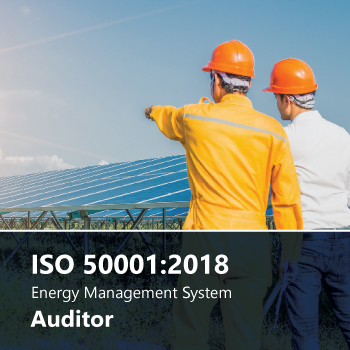Energy management systems (EnMS) and how ISO 50001 helps companies improve performance

An Energy Management System (EnMS) is a structured framework designed to help organizations manage their energy use more efficiently. It involves setting up processes, policies, and tools aimed at optimizing energy consumption, reducing costs, and minimizing environmental impact. With rising energy costs and sustainability becoming a core organizational value, an EnMS offers companies a strategic approach to tackle these challenges.
Key components of an energy management system
A robust EnMS includes several key components to manage and continually improve energy performance:
- Energy policy: This is the foundation, outlining top management’s commitment to energy performance improvement. It typically includes objectives and defines the organization’s strategy for energy management.
- Energy review: This phase involves evaluating current energy usage, identifying major energy-consuming areas, defining energy performance indicators, establishing a baseline (or baselines) and setting measurable energy-saving targets.
- Implementation and operation: Putting plans into action involves allocating resources, controlling processes, managing design and procurement with a focus on energy performance.
- Monitoring and measurement: Continuous tracking of energy performance is essential to evaluate progress, identify improvement areas, and verify the impact of implemented measures.
- Review and improvement: Regular assessments ensure that the EnMS continues to improve and aligns with evolving organizational goals.
What about ISO 50001?
ISO 50001 is the international standard with requirements for setting up an effective energy management system. It is widely applicable to any organization, regardless of its size, sector, or energy consumption, providing a structured approach to manage and reduce energy use systematically. By adopting ISO 50001, companies can take a proactive stance on energy management, driving sustainability, cost savings and gaining a strong reputation in the market.
Real-world examples of energy management systems in action
Many organizations worldwide have implemented energy management systems to reduce costs, improve efficiency, and support sustainability. Here are some notable examples:
- BMW Group - Energy efficiency in manufacturing
BMW implemented an EnMS across several manufacturing plants, aligning with ISO 50001 requirements to optimize energy use. In its Munich and Leipzig plants, BMW focused on energy-intensive processes such as painting and welding. Through tracking and managing energy use, BMW reduced energy consumption by approximately 40% per vehicle manufactured, significantly contributing to its sustainability goals. - Coca-Cola Hellenic - Beverage industry savings
Coca-Cola Hellenic Bottling Company implemented an EnMS across its facilities, including its bottling plant in Romania. By optimizing lighting, air compression, and water heating systems, the company achieved a 16% reduction in energy consumption, leading to significant cost savings and reduced carbon emissions. - Hilton Worldwide - Energy efficiency in hospitality
Hilton launched “LightStay,” an EnMS-aligned initiative to monitor and manage energy use, water consumption, and waste. Through measures like LED lighting, efficient HVAC systems, and improved insulation, Hilton reduced energy consumption by over 20% across its 5,700 properties globally. - ArcelorMittal - Steel industry energy management
ArcelorMittal, a leading steel producer, implemented an EnMS to enhance energy efficiency at its plants. By monitoring energy use in real-time and implementing targeted efficiency measures, ArcelorMittal achieved annual savings of around $230 million and reduced carbon emissions by thousands of tons. - City of Los Angeles - Municipal energy savings
The City of Los Angeles adopted an EnMS across its municipal buildings to improve energy efficiency. Through energy-efficient lighting, optimized HVAC systems, and real-time energy monitoring, the city saved millions in energy costs and reduced its carbon footprint, setting a strong example in municipal energy management.
Key benefits of using ISO 50001 and establishing an energy management system
An effective EnMS, aligned with ISO 50001 requirements brings numerous benefits:
- Cost savings: Efficient energy use can significantly reduce operational costs. Coca-Cola Hellenic’s EnMS, for instance, led to a 16% energy consumption reduction across its European plants.
- Reduced environmental impact: Energy efficiency directly contributes to lower greenhouse gas emissions. For example, ArcelorMittal’s initiatives led to a notable reduction in emissions in the steel industry.
- Enhanced reputation: ISO 50001 certification demonstrates a strong commitment to sustainability, improving an organization’s standing with customers, investors, and regulatory bodies.
- Risk management: By managing energy consumption, organizations can better anticipate and mitigate risks associated with fluctuating energy costs and compliance requirements.
- Employee engagement: An EnMS fosters a culture of sustainability, raising awareness and encouraging employees to participate in energy-saving initiatives.
Learning about energy management is important and becoming certified as EnMS professional is a smart career move
As companies increasingly prioritize sustainability, the demand for qualified energy management professionals is on the rise. People with expertise in ISO 50001 and energy management can offer organizations valuable insights, helping them cut costs, improve environmental performance, and strengthen regulatory compliance. For anyone looking to advance their career in energy management, obtaining ISO 50001 knowledge and certification as an EnMS practitioner or auditor offers several benefits:
- Your knowledge is in demand: Many organizations seek experts in ISO 50001 to lead their energy management initiatives, making your knowledge a valuable asset.
- Career advancement: Certified professionals are well-positioned for roles in sustainability, energy efficiency, and regulatory compliance, opening doors to interesting career opportunities.
- Global recognition: ISO 50001 is a globally recognized standard, and certification as an EnMS auditor or practitioner highlights expertise in energy management, which is valued worldwide.
- Enhanced skill set: Training in energy management and ISO 50001 equips you with the skills to help organizations achieve sustainability goals and operate more efficiently.
To support your journey in energy management, we offer online training on ISO 50001. Our course is designed for those looking to become certified EnMS practitioners or auditors and is perfect for professionals in all sectors interested in energy performance improvement.
Conclusion
An Energy Management System (EnMS) is a powerful tool for organizations to optimize energy consumption, reduce costs, and contribute to environmental sustainability. Real-world examples from BMW, Coca-Cola Hellenic, and Hilton illustrate how effective energy management can yield significant cost savings and environmental benefits. ISO 50001 provides a recognized framework for implementing an EnMS, helping companies achieve their energy management and sustainability goals. Embracing these principles allows companies to stay competitive, comply with regulations, and demonstrate leadership in sustainability.
By investing in your knowledge of energy management and ISO 50001, you can play a crucial role in helping organizations meet their goals—and advance your career in a field that truly makes a difference.


